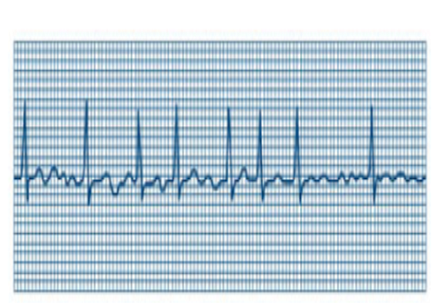


Indian Journal of Science and Technology
Year: 2022, Volume: 15, Issue: 17, Pages: 767-777
Original Article
Ekta Soni1*, Arpita Nagpal2, Khyati Chopra3
1Ph.D. Scholar, School of Engineering and Sciences, G. D. Goenka University, Gurugram, 122001, Haryana, India
2Assistant Professor, School of Engineering and Sciences, G. D. Goenka University, Gurugram, 122001, Haryana, India
3Department of Computer Science &Engineering, SEST, Jamia Hamdard, New Delhi, 110062, Delhi, India
*Corresponding Author
Email: [email protected]
Received Date:07 January 2022, Accepted Date:12 March 2022, Published Date:09 May 2022
Background/Objectives: An occasional Atrial Fibrillation (AF) event in heart rhythm should be monitored regularly, in continuous intervals. Timely detection of these anomalies in heart rhythm is required to save patients from sudden cardiac arrest. Method: A long-duration ECG categorization algorithm named AFECOC is proposed. For this one-minute-long 71 signals are attained from the Physionet’s “MIT-BIH arrhythmia (MA)” and “AF” database. Two-stage filtering of noisy signals is employed before signal analysis. Four algorithms i.e. Error-Correcting Output Code (ECOC), Naïve Bayes, Decision Tree, and K-Nearest Neighbor(K-NN) are applied to reduce the feature set and then signals are classified with ECOC classifier. Findings: It was found that the ECOC algorithm gives the highest accuracy of 81.95% on the complete feature set. To exclude the irrelevant features, the highest performing algorithm ECOC was used that extracts the combination of the feature sets that get most affected during AF. The combination of ’heart-beat’ and ’mean QT-interval’ are found to be the most relevant features affected during AF events. The accuracy of these two features was evaluated with four classifiers namely ECOC, Naïve Bayes, Decision tree-based and K mean classifier and the accuracy obtained was 89.6%, 76.19%, 76.19%, and 61% respectively. It concludes that the proposed methodology achieved the highest accuracy of 89.6% with the ECOC classifier. Finally, all the AF rhythms have been checked using annotated labels for spontaneous change in QT-interval to verify the designed methodologies. Novelty: Instead of missing P-waves and RR-interval variation, recognition of mean QT interval variation-based AF event detection algorithm gives better accuracy for longer signals. Hence, it can be implemented in Real- Time continuous monitoring.
Keywords: Atrial Fibrillation (AF); Classification; Error Correcting Output Code (ECOC); Feature extraction; QTinterval
© 2022 Soni et al. This is an open-access article distributed under the terms of the Creative Commons Attribution License, which permits unrestricted use, distribution, and reproduction in any medium, provided the original author and source are credited.
Published By Indian Society for Education and Environment (iSee)
Subscribe now for latest articles and news.